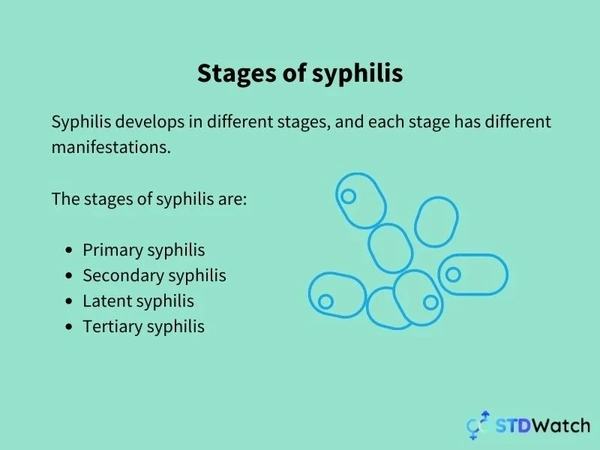Syphilis is one of the oldest sexually transmitted infections (STIs) and it causes millions of new cases around the world each year, but do you know whether syphilis can affect the nose?
Read on to discover the answer to this question.
Can syphilis affect the nose?
Syphilis may affect the nose, during the later stages of syphilis, known as the tertiary stages of syphilis.
Syphilis has long been known as “the great imitator”, because it can produce symptoms that resemble the symptoms of other conditions in many different parts of the body. Among these manifestations, we can find nasal syphilis, which affects the nose during the later stages of the disease.
To understand nasal syphilis, let’s do a quick review on the different stages of syphilis.
Syphilis is a sexually transmitted infection (STI) caused by a bacteria called Treponema pallidum.
According to the CDC, syphilis can be spread through intimate contact with a syphilitic sore or chancre during vaginal, anal, or oral sex. Syphilis can also spread from a mother to her baby during pregnancy or childbirth.
The stages of syphilis
Syphilis develops in different stages, and each stage has different manifestations. The stages of syphilis are:
- Primary syphilis
- Secondary syphilis
- Latent syphilis
- Tertiary syphilis
Primary syphilis
This is the first stage of the disease, which occurs soon after a person has been exposed to the bacteria.
Approximately 2 to 12 weeks after the exposure, a smooth, painless, red sore (chancre) develops on the affected area (genitals or mouth). According to the Cleveland Clinic, this chancre heals on its own.
Secondary syphilis
1 to 6 months after the chancre disappears, a bumpy, reddish rash will appear on the skin. This rash can affect the entire body, including the hands and feet, and it also disappears on its own without leaving scars.
Other symptoms during this stage can include:
- Fatigue
- Fever
- Muscle aches
- A sore throat
Latent syphilis
If left untreated, syphilis will progress to a latent stage. According to the NHS, this stage can last months to years.
Tertiary syphilis
This is the stage where nasal syphilis typically occurs, and it’s also the most advanced stage of the disease.
According to the Mayo Clinic, 15 to 30 percent of patients who don’t receive treatment will develop tertiary syphilis. In addition to the nose, tertiary syphilis can cause damage to other organs and structures, such as:
- Brain
- Nervous system
- Eyes
- Heart
- Blood vessels
- Liver
- Bones
- Joints
Symptoms of nasal syphilis
According to studies published by the Archives of Otolaryngology and Rhinology and the Chinese Journal of Pathology, the nasal manifestations of syphilis can include:
- Superficial and/or deep lacerations
- Gummatous deposits (soft, tumour-like masses) in any part of the nose
- Destruction of the bony structure of the nose
- Shrinking of the nasal fibrous tissue
- Swelling of the nasal blood vessels
- Tonsillar ulcers
- Formation of microabscesses
- Anosmia (loss of the sense of smell)
- Nasal discharge
These changes result in a characteristic change to the nose’s appearance, called a saddle nose deformity. Saddle nose deformity occurs when the bridge of the nose collapses, hence its name, and it’s most common in patients with untreated congenital syphilis. This condition can have other causes, such as:
- Nasal trauma
- Polychondritis
- Substance abuse
- Leprosy
- Polyangiitis
A brief history of nasal syphilis
Syphilis is probably one of the oldest STIs known to humankind. According to the Journal of Military and Veteran’s Health, syphilis has long been known to cause outbreaks — particularly among members of active militaries — throughout history.
Since antibiotics weren’t discovered and commercialized until the 20th century, cases of syphilis and other STIs went untreated — alternatively, early physicians tried to treat these conditions with alternative treatments that were often ineffective and dangerous. One of the most common treatments for syphilis was mercury, which led to mercury poisoning and death.
As a result, it was much more common for syphilis to advance to more severe stages, including tertiary nasal syphilis.
Penicillin, which was discovered in 1928, was hailed as a miracle which was able to cure many infectious diseases — including syphilis. Along with better sex education and safe sex strategies, penicillin was able to significantly lower the incidence of syphilis in just a few decades.
Can syphilis on the nose be treated?
Thankfully, syphilis that affects the nose isn’t very common nowadays. The advent of modern antibiotics — starting with penicillin — has made it possible to treat most cases of syphilis before they progress to the more advanced stages of the disease.
Cases of saddle nose deformity due to syphilis are extremely rare, and they may require a rhinoplasty. In these cases, a surgeon may have to fill the collapsed nasal bridge with a natural or synthetic implant to reshape the nose.
If you experience any symptoms that could point to syphilis, it’s important to seek medical assistance. Your healthcare provider will be able to examine you and order the necessary tests to reach an accurate diagnosis, and prescribe the right type of treatment for you.
Syphilis can be easily treated with a course of antibiotics, but it’s important to complete your treatment as directed by your doctor. Unfortunately, the effects of late-stage syphilis can’t always be reversed with treatment, which is why it’s so important to take action against the disease. Early treatment is an incredibly effective measure against syphilis, and most patients go back to normal very quickly.
References
- Syphilis - CDC Fact Sheet - cdc.gov
- Syphilis - my.clevelandclinic.org
- Symptoms Syphilis - nhs.uk
- Syphilis - mayoclinic.org
- Tertiary Nasal Syphilis: Rare But Still A Reality - peertechzpublications.com
- [Pathologic diagnosis of early syphilis in nasal cavity and oropharynx] - pubmed.ncbi.nlm.nih.gov
- Syphilis – Its early history and Treatment until Penicillin and the Debate on its Origins - jmvh.org


